Miho Dohi
5 rue de Beaune, Paris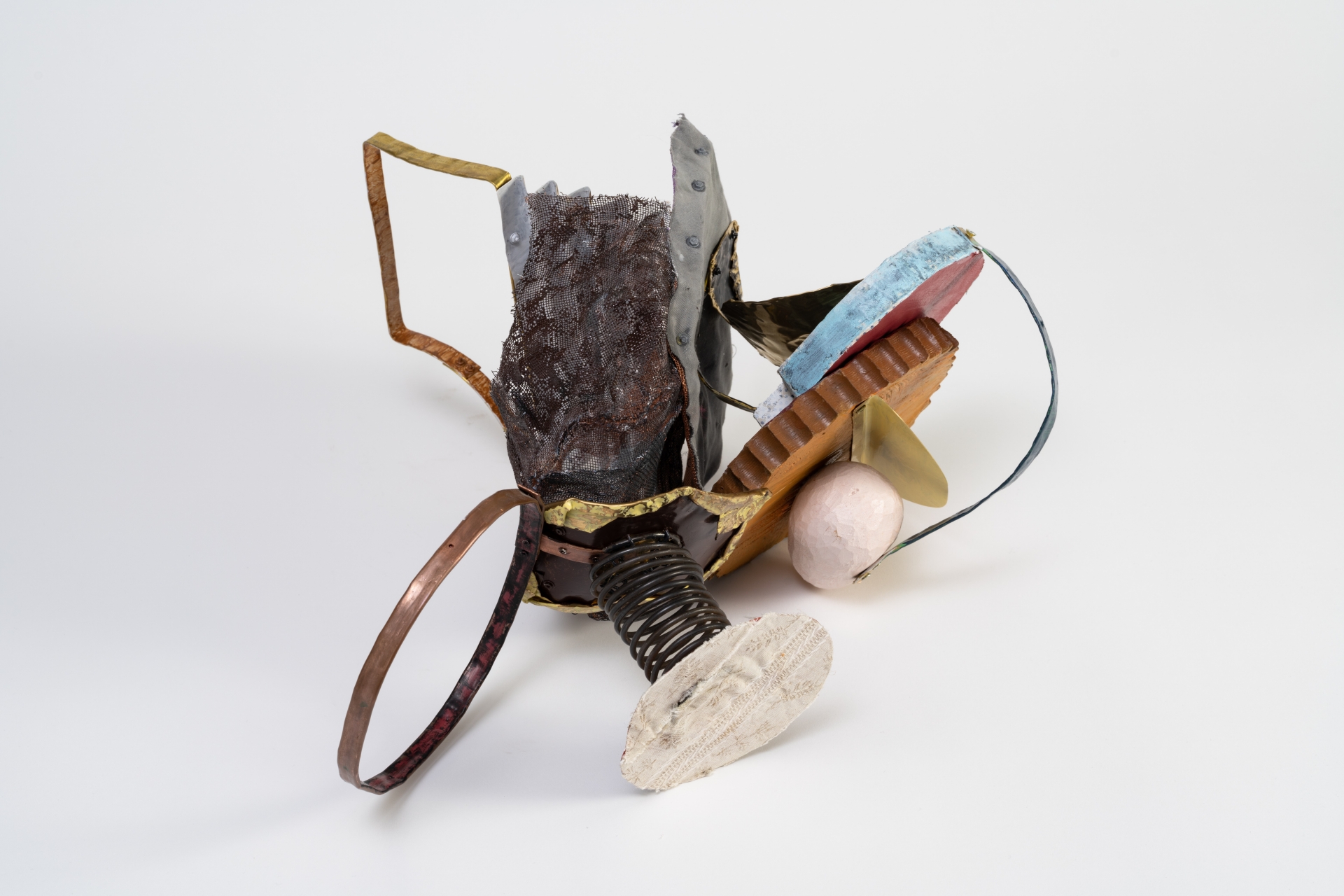
Miho Dohi’s sculptures are a meticulous work of assemblage and collage.
As in the technique of Ikebana, it is based on asymmetry, depth and space. Dohi works patiently and produces only a few “objects”: she calls her sculptures “buttai”, or objects in Japanese. This term has of course not been chosen by chance and, while her sculptures have quite clearly no other point than being artworks, they are like objects thanks to their allusive formalism. They do not look like anything which might be tangible and yet they bring to mind images, which are as evocative as they are strange.
For some time, Miho Dohi has been exhibiting her sculptures surrounded by apparently abstract paintings. But these paintings, framed in a highly “crafty” way, are only seemingly abstract. In reality, they are blow-ups of sections of her sculptures which the artist has snapped mentally then reproduced in paint. This is not only a mise en abyme of her own work but also of the ambiguous position that she has with abstraction.
If Miho Dohi’s work is ambiguous, this is because it is based on the contradiction, or more exactly the marriage, between opposites: softness and hardness, metal and textiles, the organic and the artificial, the unmade and the painted. Because Dohi has in fact always been painting. Ever since her first wood sculptures, painting has always been present in it. But doesn’t the sculptress’s virtuosity lie in her ability to make markers disappear through the way she plays so cleverly with the third dimension? The synthesis at work in Dohi’s sculptures and the material syncretism in action, turn her complex pieces into strangely blatant objects: without any function or past, her sculptures come over to us as objects that have always existed in a world unknown to them, a world which is new and timeless.
La sculpture de Miho Dohi est un studieux travail d’assemblage, de collage. A l’image de la technique de l’Ikebana, il est basé sur l’asymétrie, la profondeur et l’espace. Dohi travaille patiemment et produit peu d’objets, ainsi qu’elle intitule ses sculptures « buttai », objet en japonais. Cette appellation n’est bien sûr pas anodine et si ces sculptures n’ont évidemment d’autres fonctions que d’être des œuvres d’art, elles s’apparentent à l’objet par leur formalisme allusif. Elles ne ressemblent à rien de tangible et pourtant évoquent des images, aussi réminiscentes qu’étranges.
Depuis peu, Miho Dohi expose ses sculptures entourées de peintures d’apparence abstraite. D’abstrait ces peintures encadrées de manière très « crafty », n’en ont que l’apparence. Elles sont en réalité des gros plans de certaines de ses sculptures que l’artiste a photographiées mentalement et reproduites en peintures. Une mise en abime de son propre travail mais aussi de la position ambiguë qu’elle entretient à l’égard de l’abstraction.
Si le travail de Miho Dohi est ambiguë c’est qu’il repose sur la contradiction ou plus précisément le mariage des contraires: le doux et le dur, le métal et le textile, l’organique et l’artificiel, le brut et le peint. Car Dohi peint depuis toujours. Depuis ses premières sculptures en bois, la peinture a toujours été présente dans sa sculpture. Mais la virtuosité de la sculptrice ne repose-t-elle pas sur sa capacité à faire oublier les repères en maîtrisant le jeu de la troisième dimension ? La synthèse à l’œuvre dans les sculptures de Dohi, le syncrétisme matériel qui y opère, font de ses œuvres complexes des objets d’une étrange évidence: sans fonction, sans passé, ses sculptures apparaissent aux yeux du spectateur comme des objets ayant toujours existé dans un monde dont ils ignoraient l’existence, un monde nouveau et immémoriel.
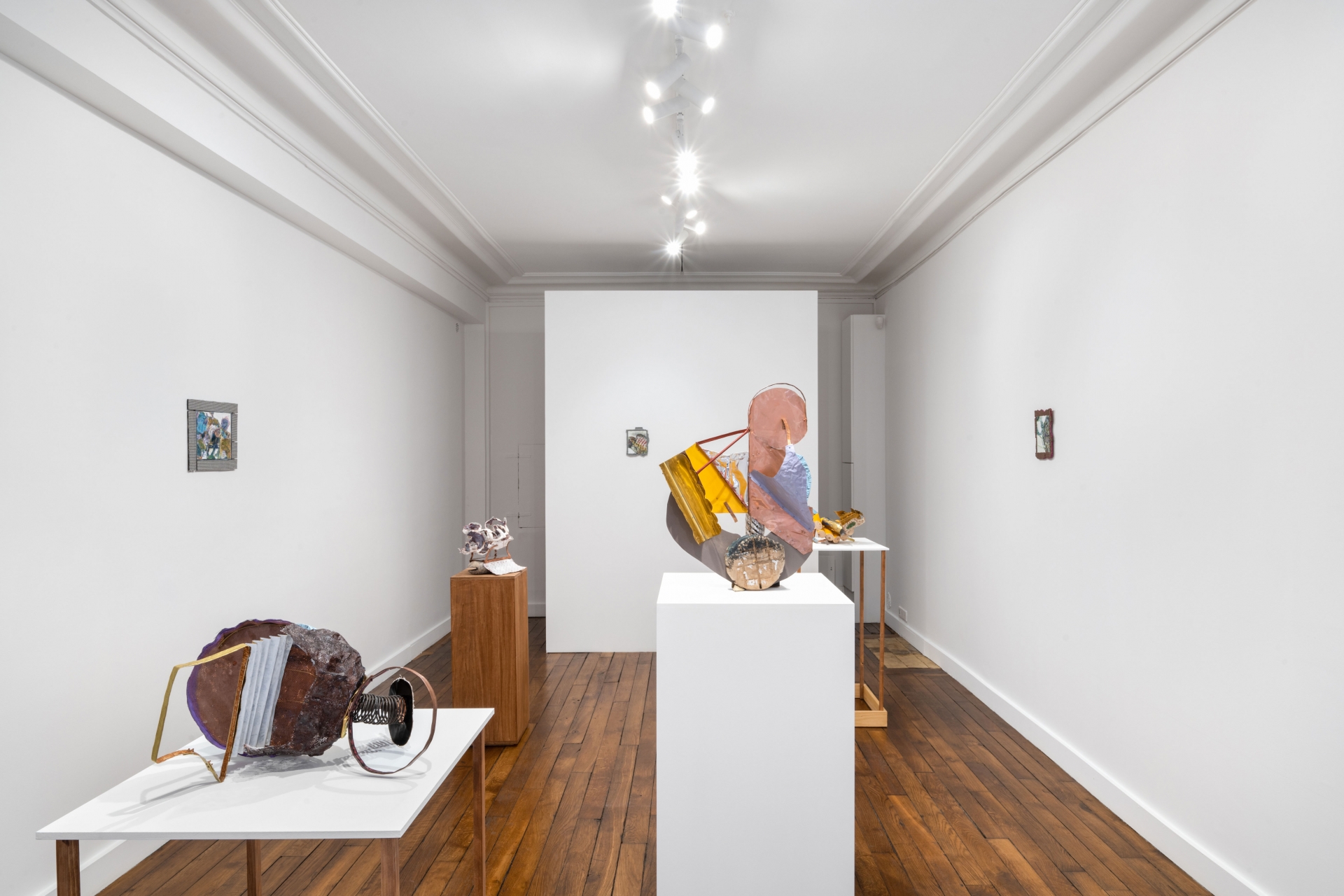
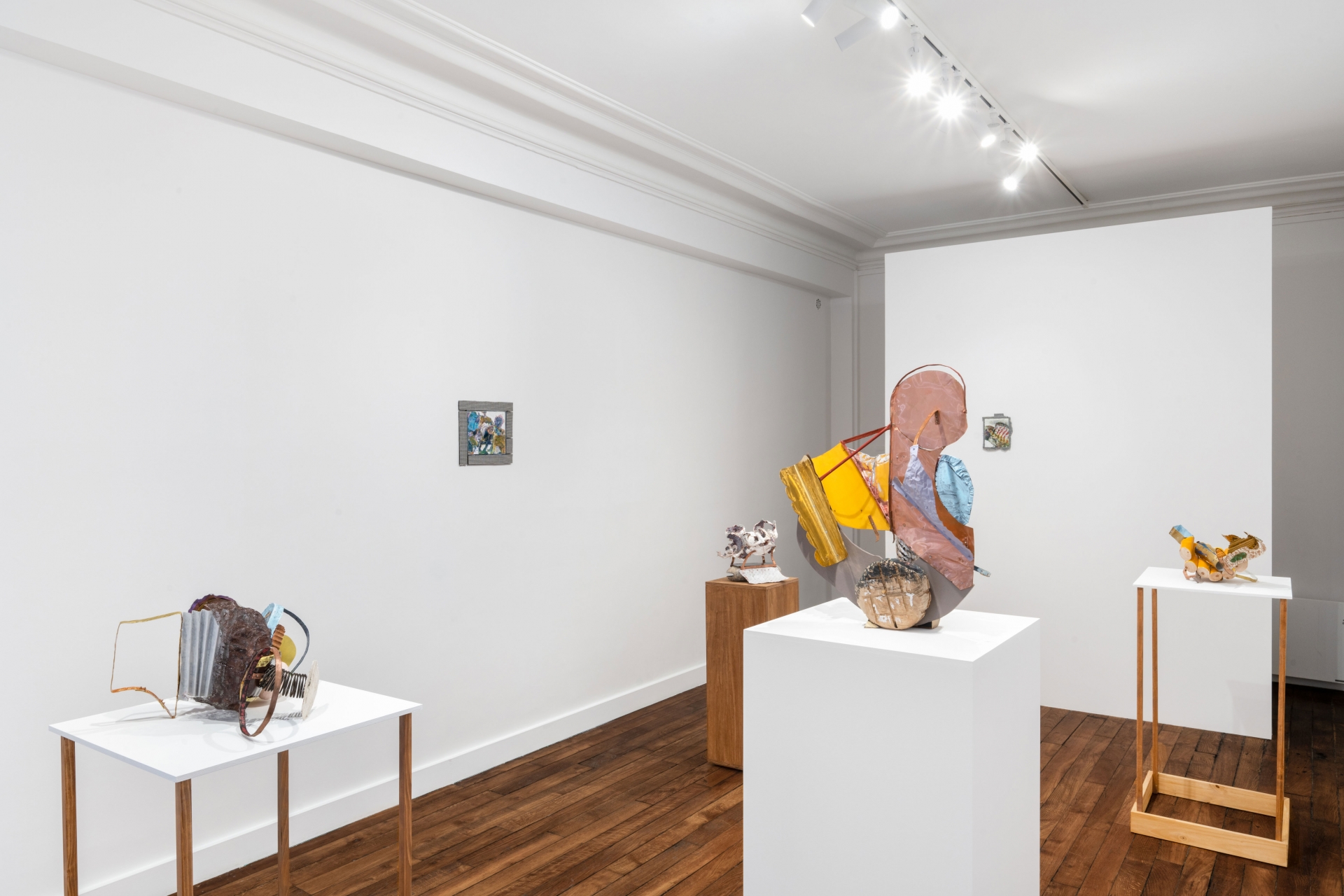
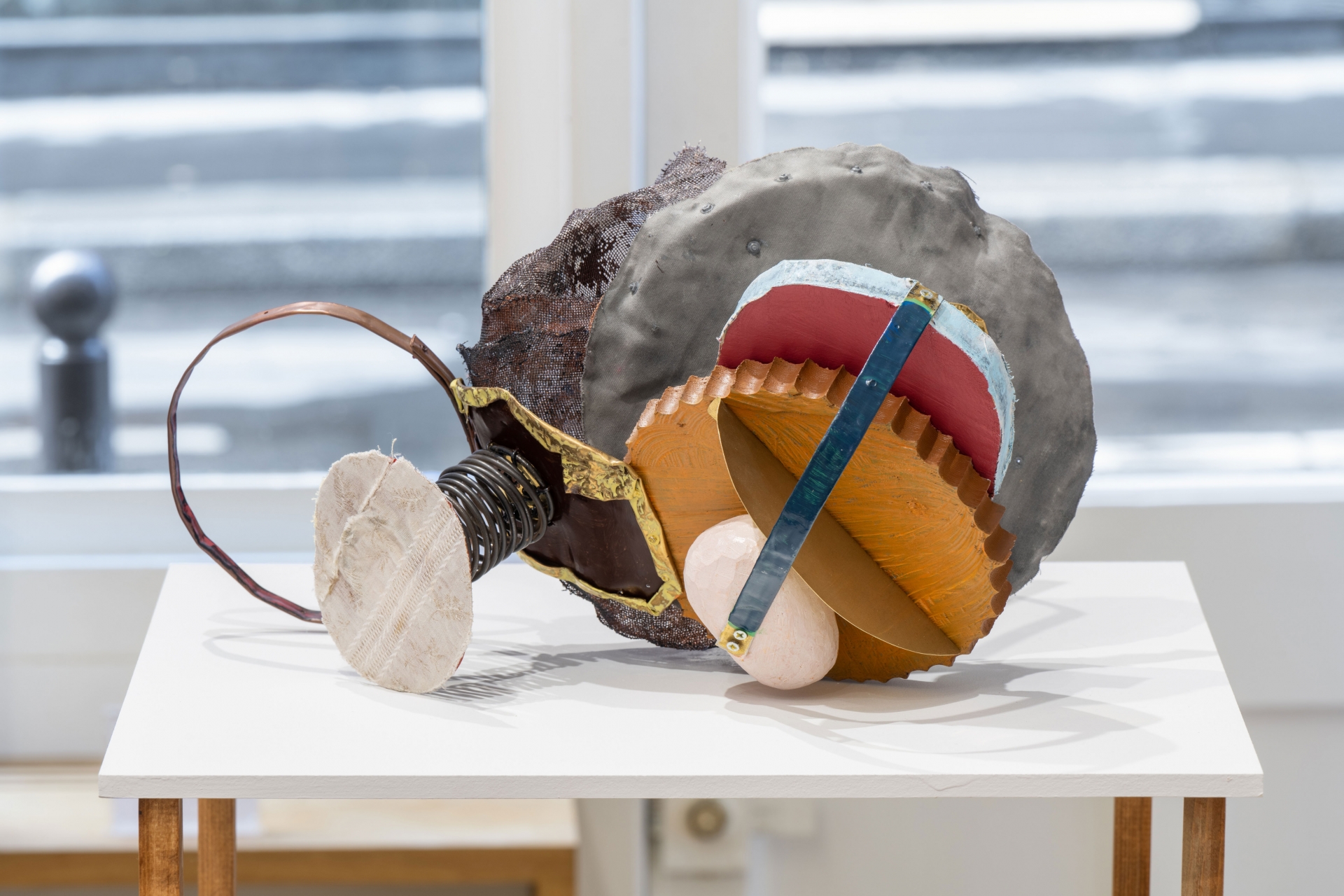
buttai 95, 2023
copper net, copper plate, brass, wire, wood, cloth, acrylics and paint, 25 × 45 × 39 cm
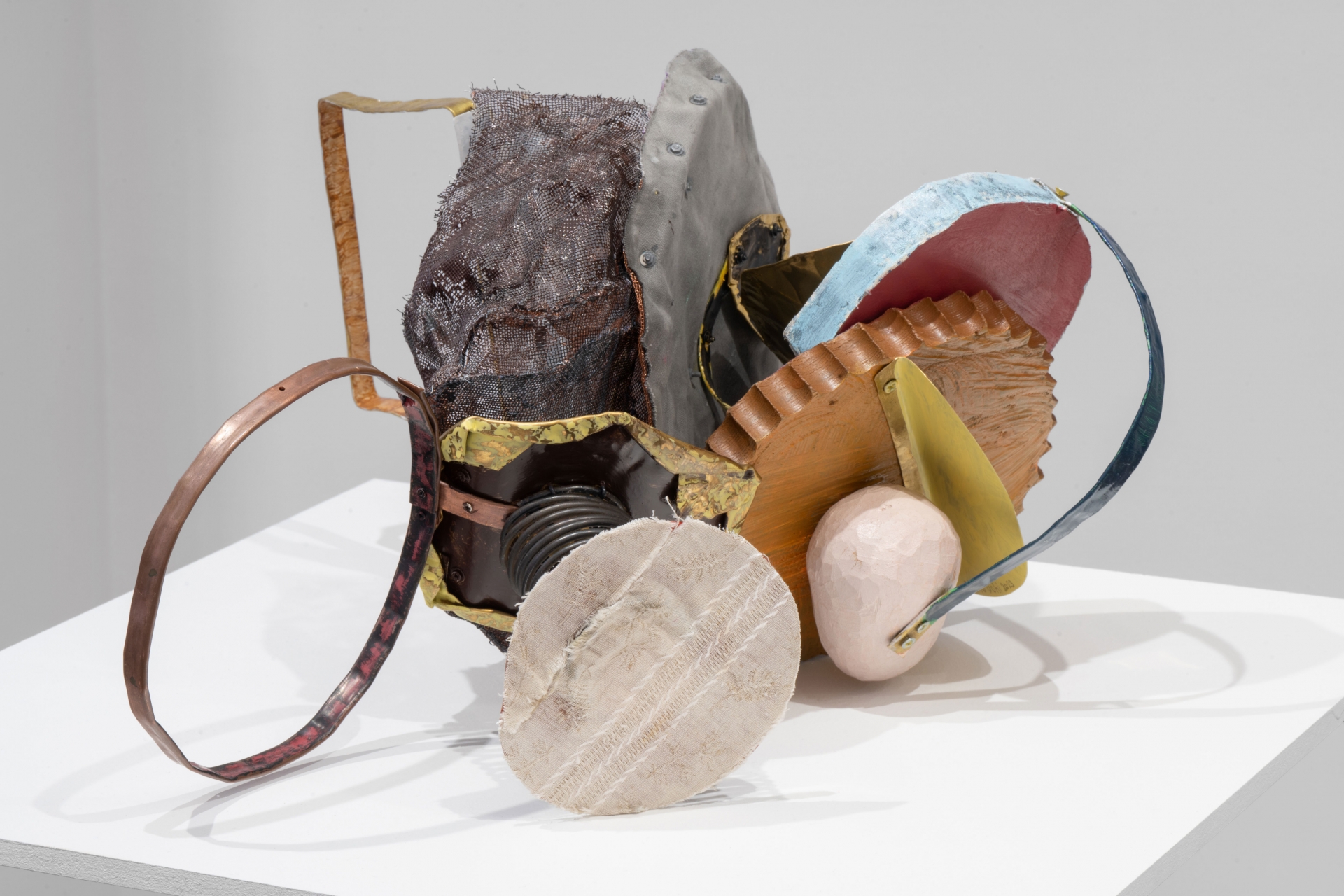
buttai 95, 2023
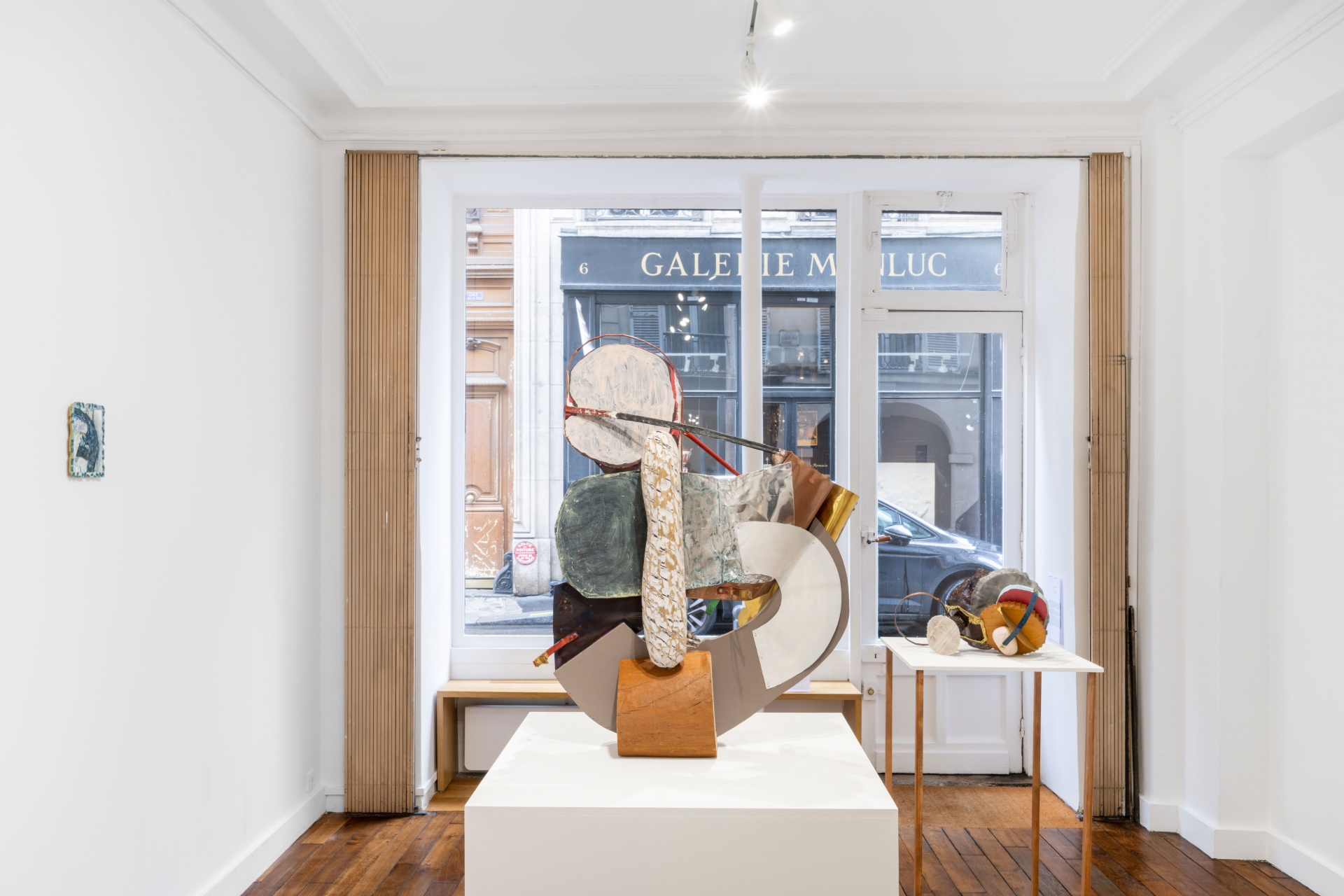
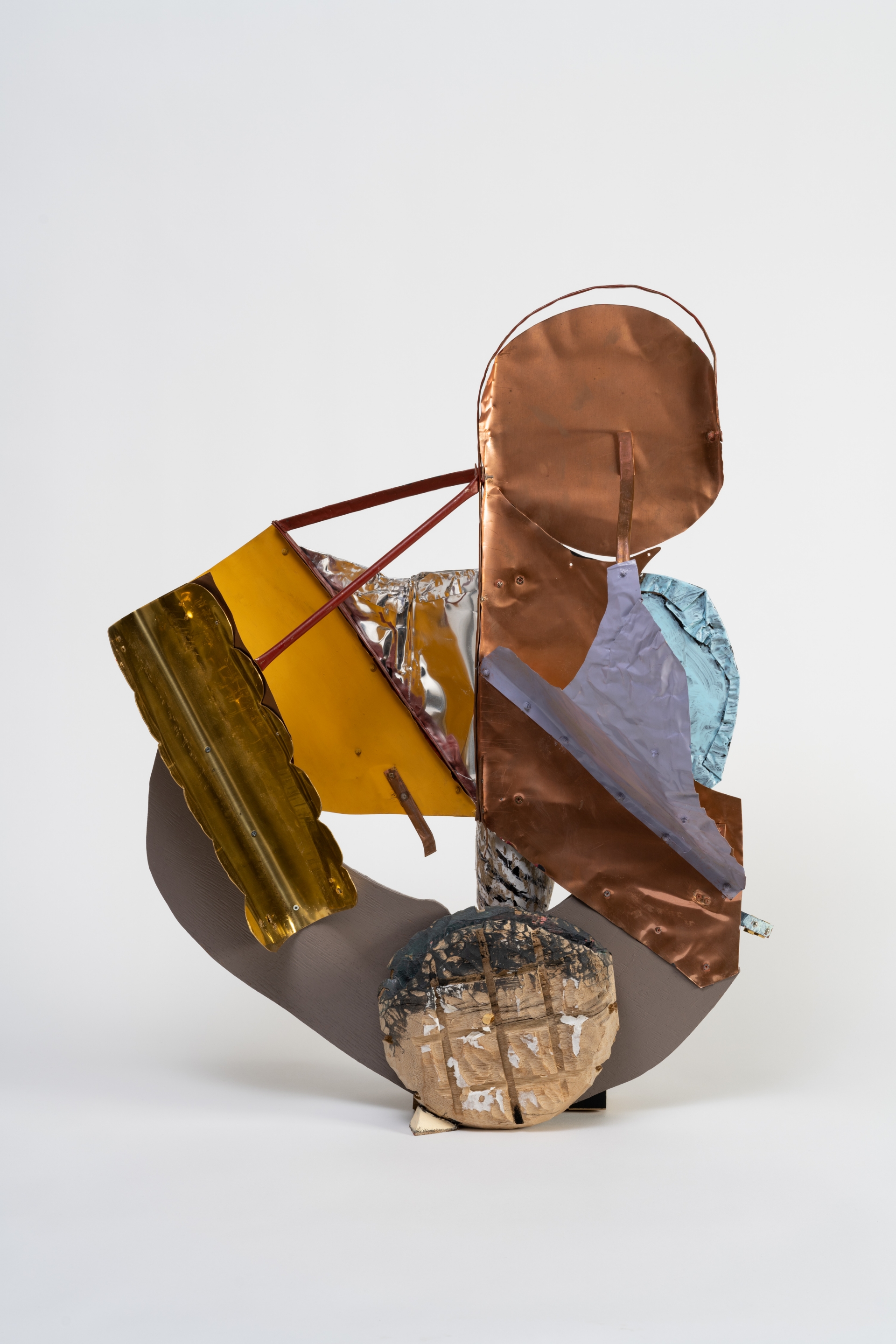
buttai 96, 2023
wood, brass, copper plate, aluminum plate, acrylics and paint, 70 × 54 × 27 cm
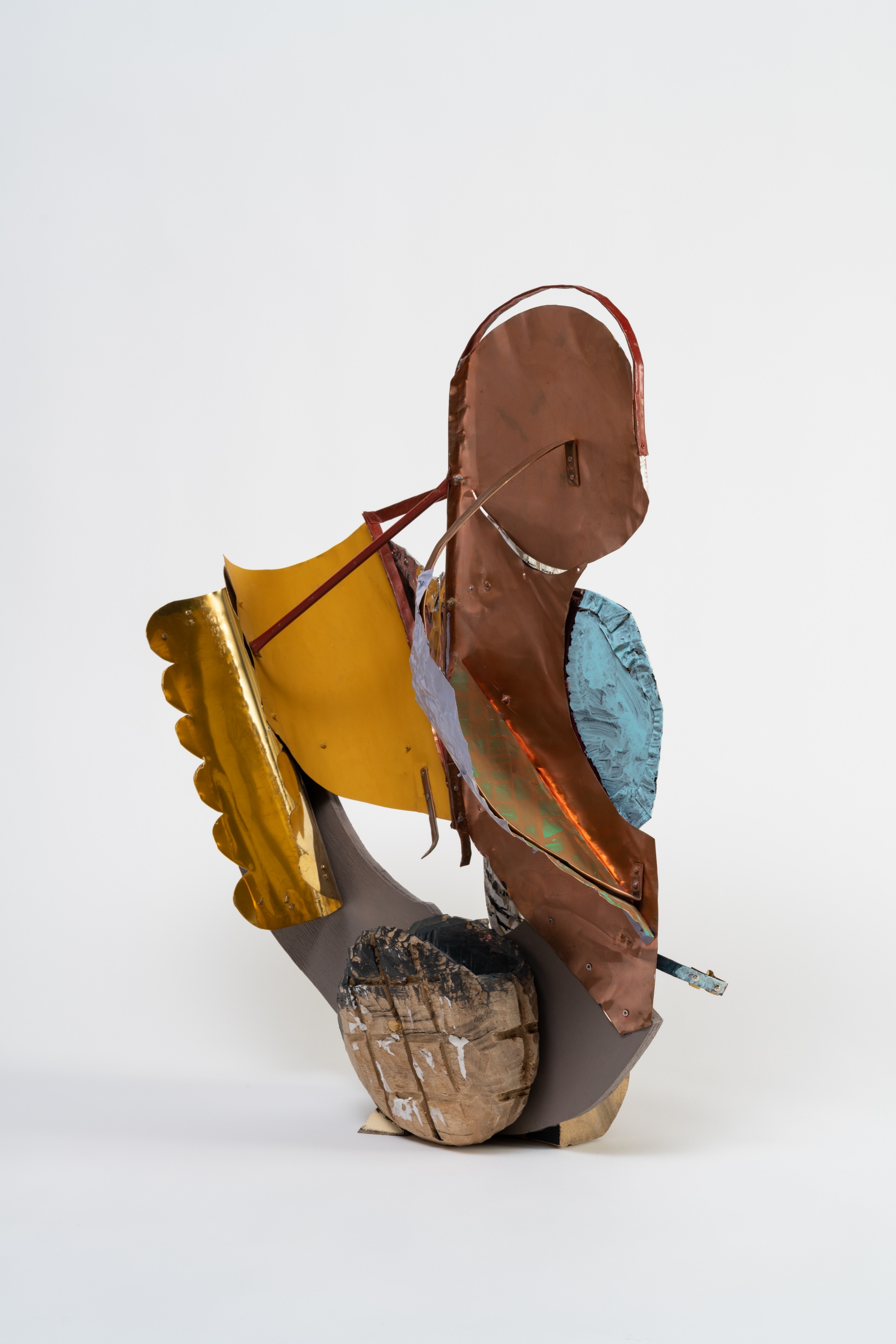
buttai 96, 2023
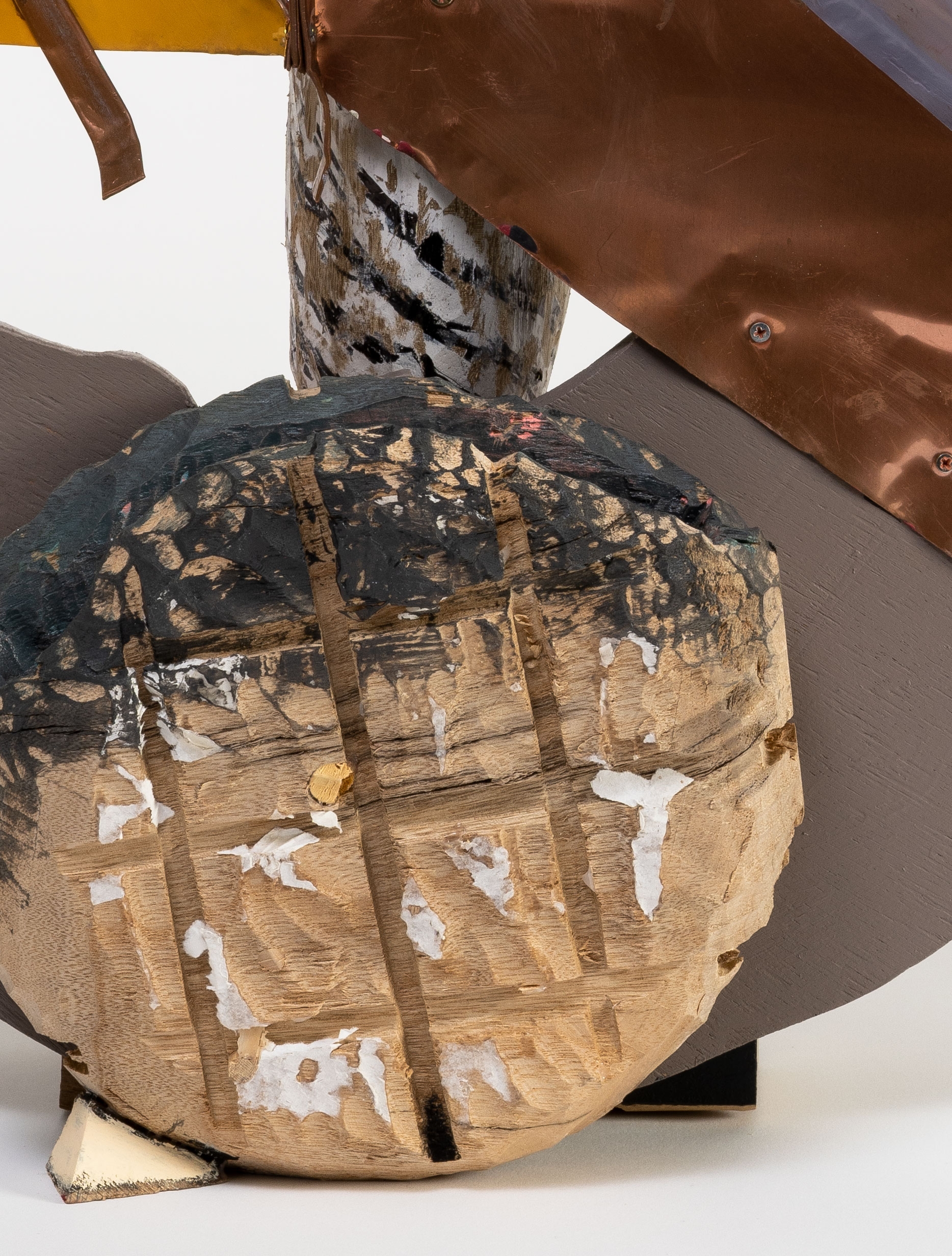
buttai 96, 2023, detail

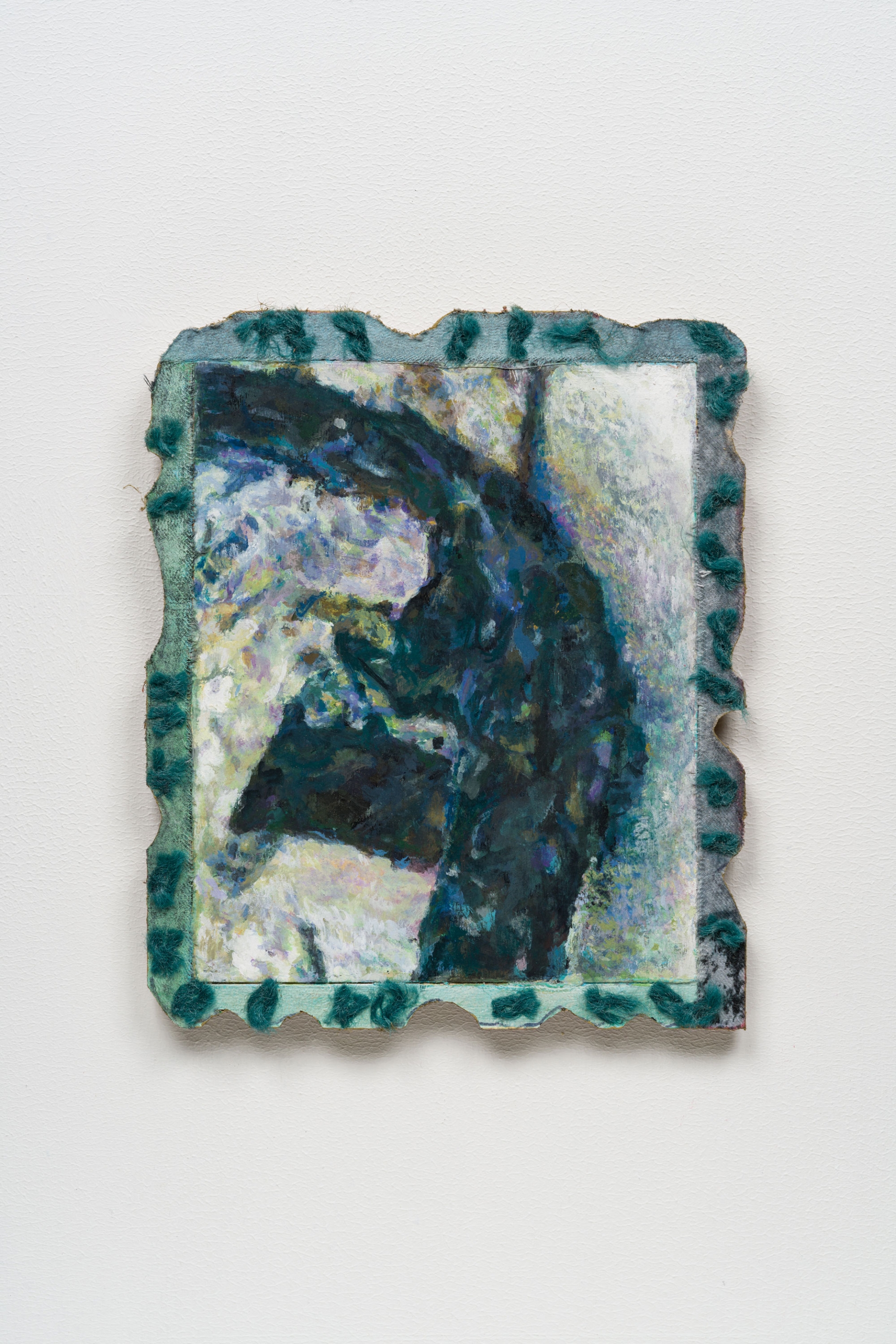
untitled 3, 2023
wood, acrylics and yarn, 19.2 × 16 cm
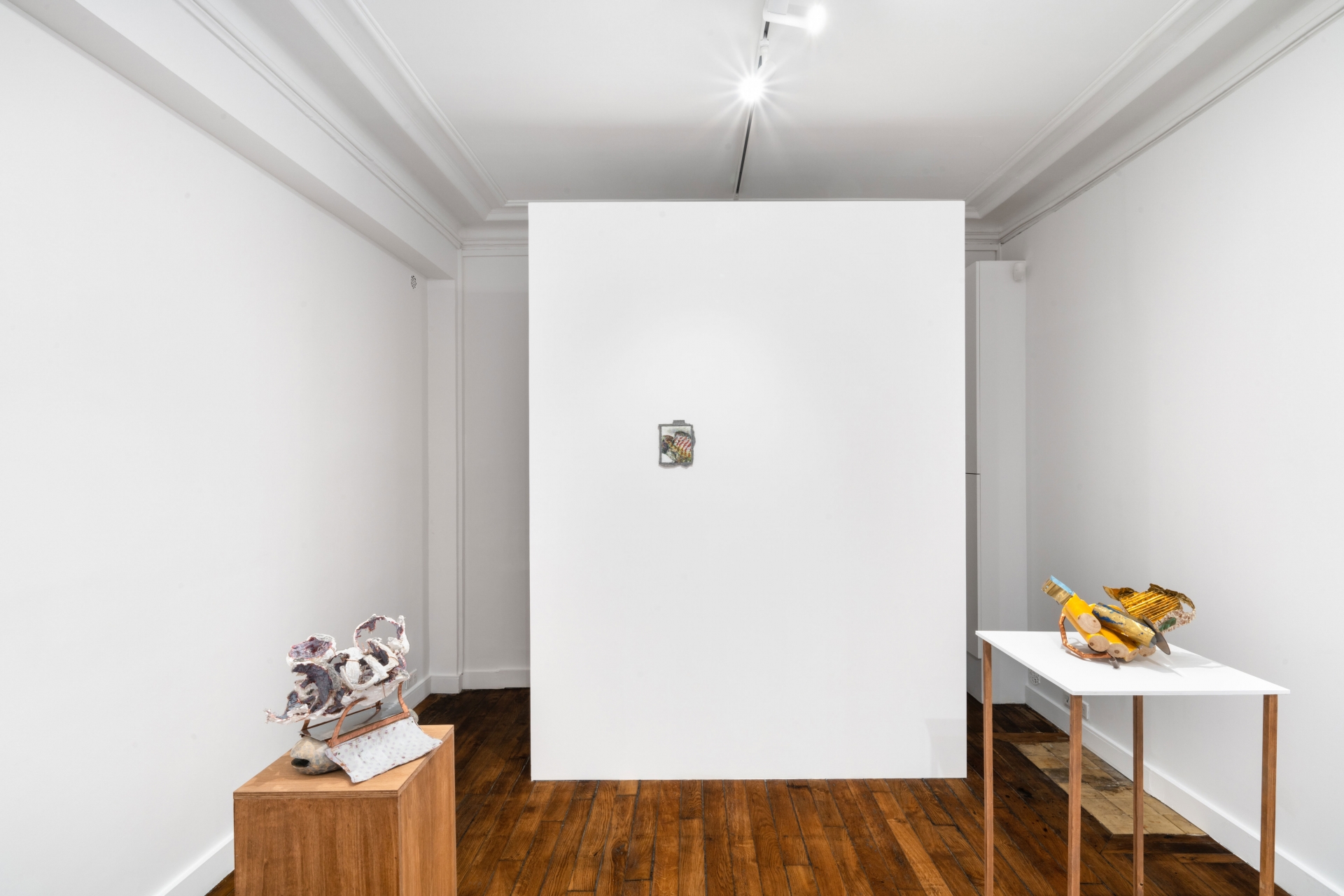
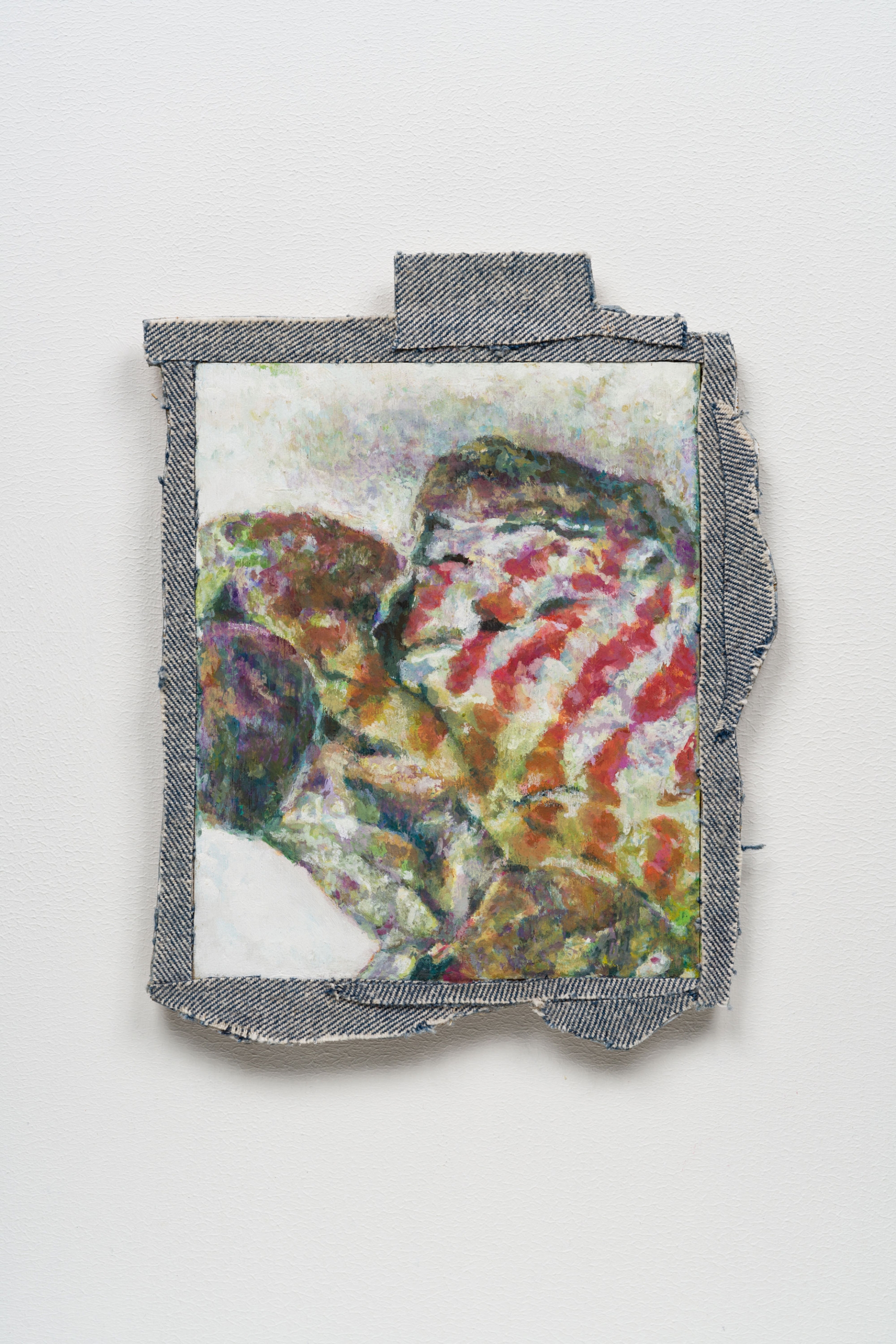
untitled 4, 2023
wood, acrylics and cloth, 21.5 × 17 cm
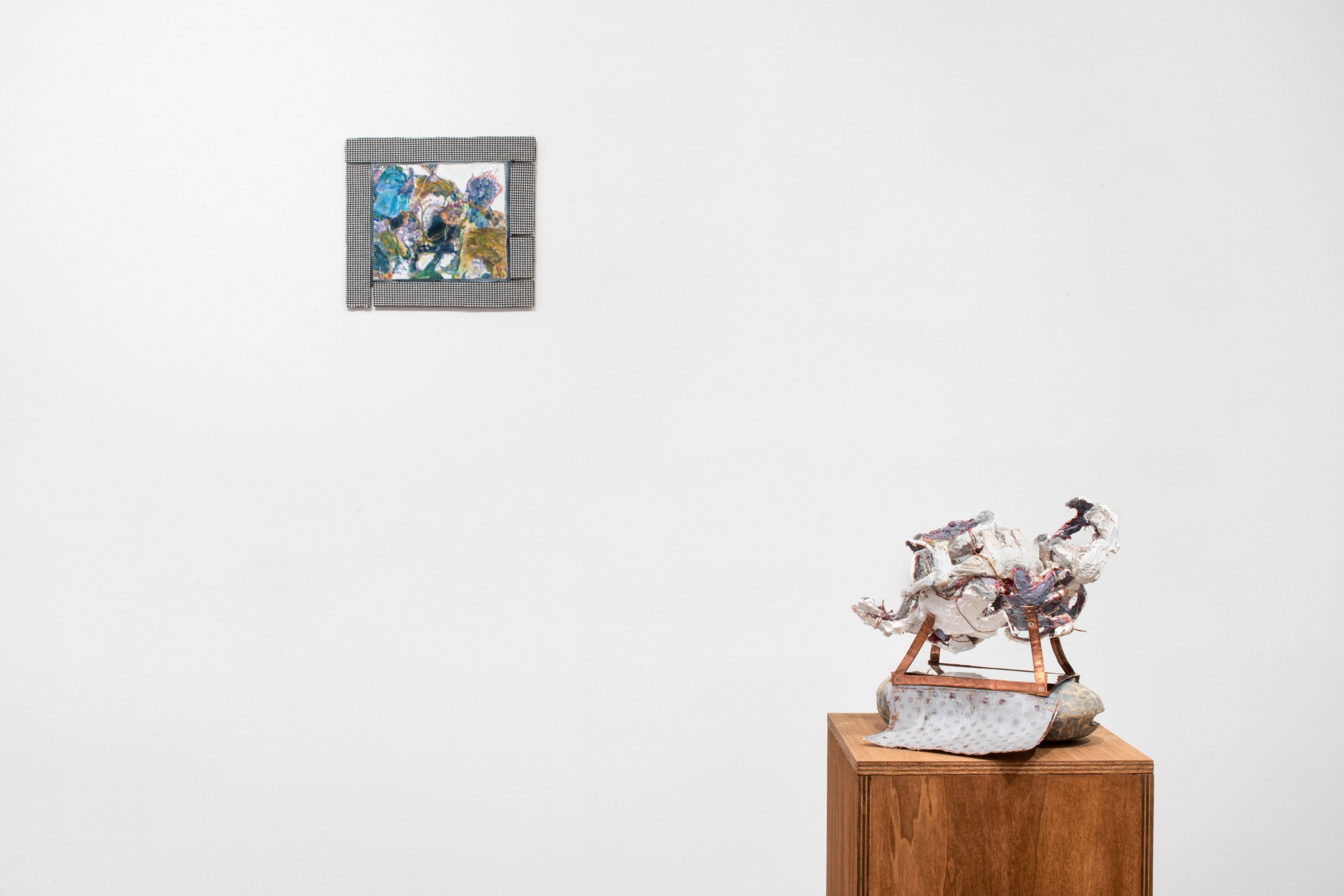
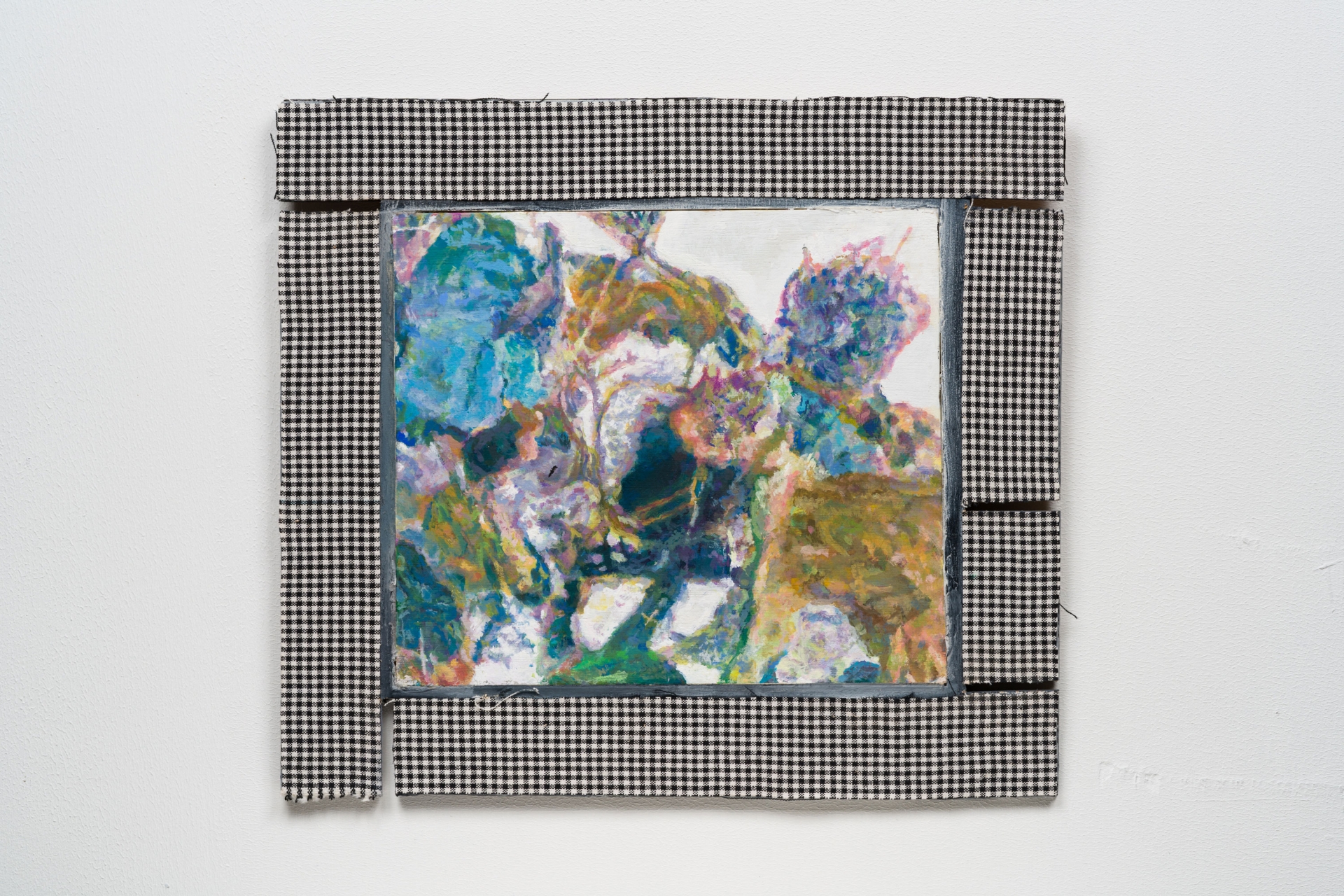
untitled 1, 2023
wood, acrylics and cloth, 29 × 32 cm

buttai 91, 2022
plaster, wood, copper plate, aluminum plate, paper, cloth, thread, acrylics and paint, 29 × 33 × 24 cm
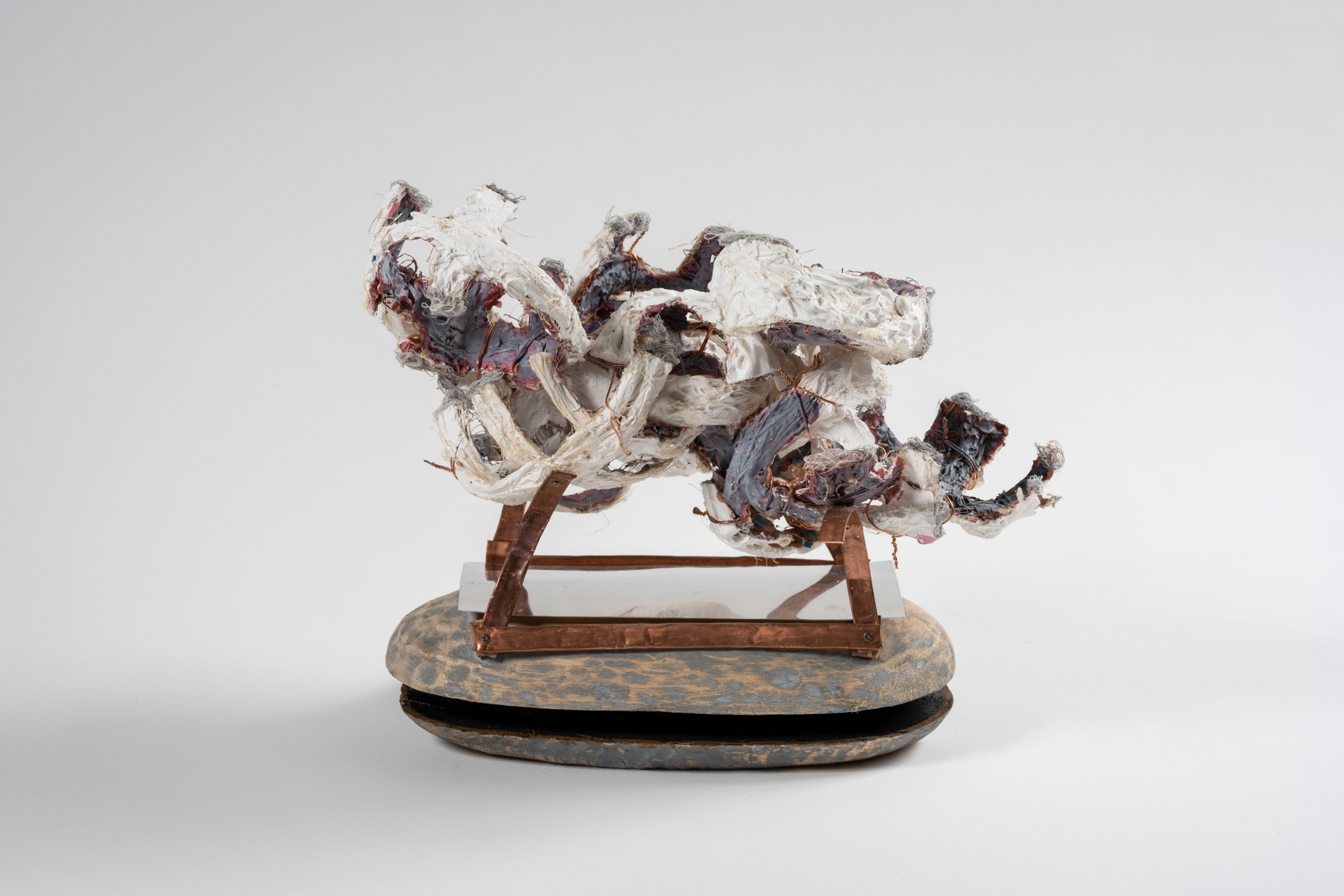
buttai 91, 2022
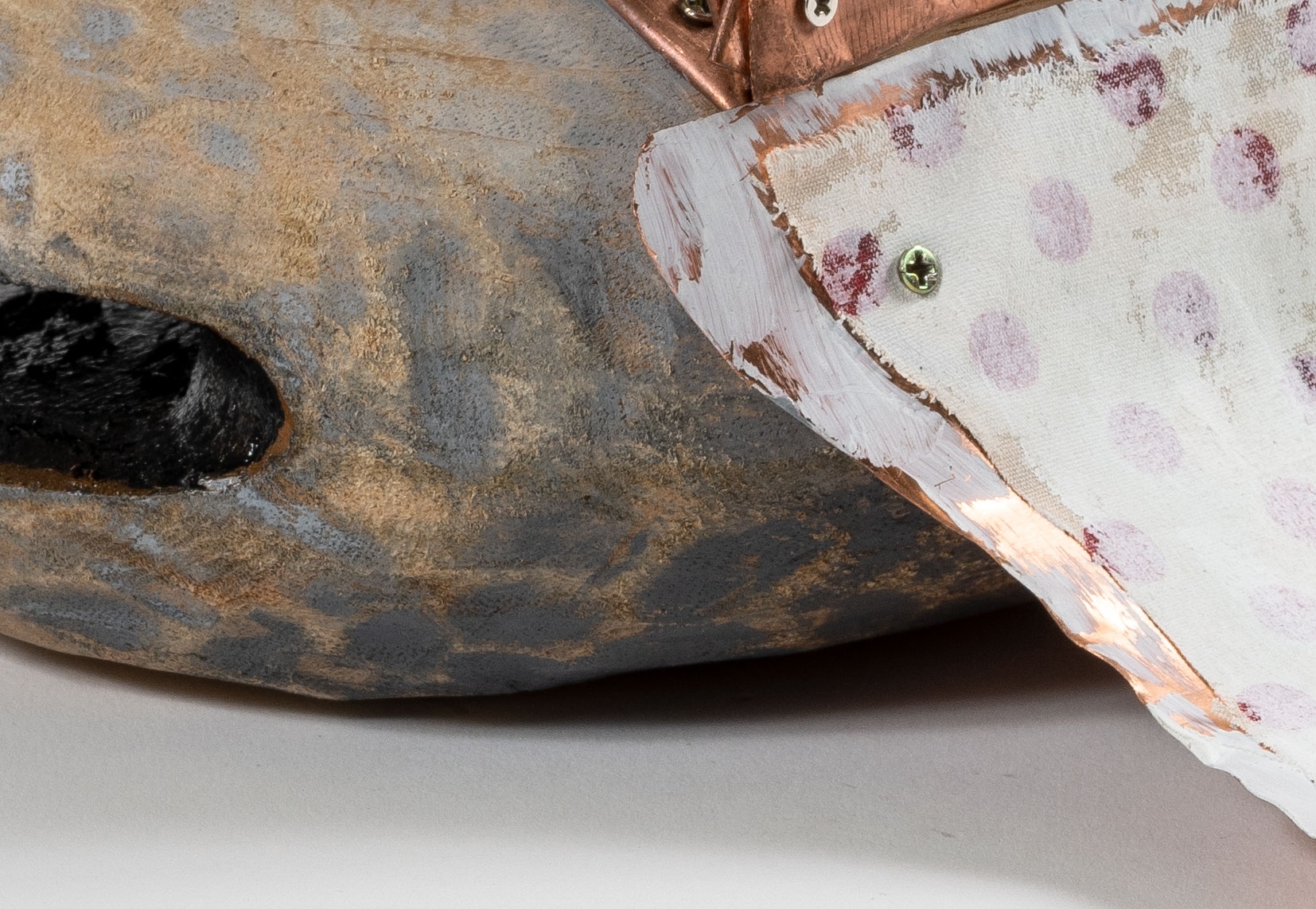
buttai 91, 2022, detail
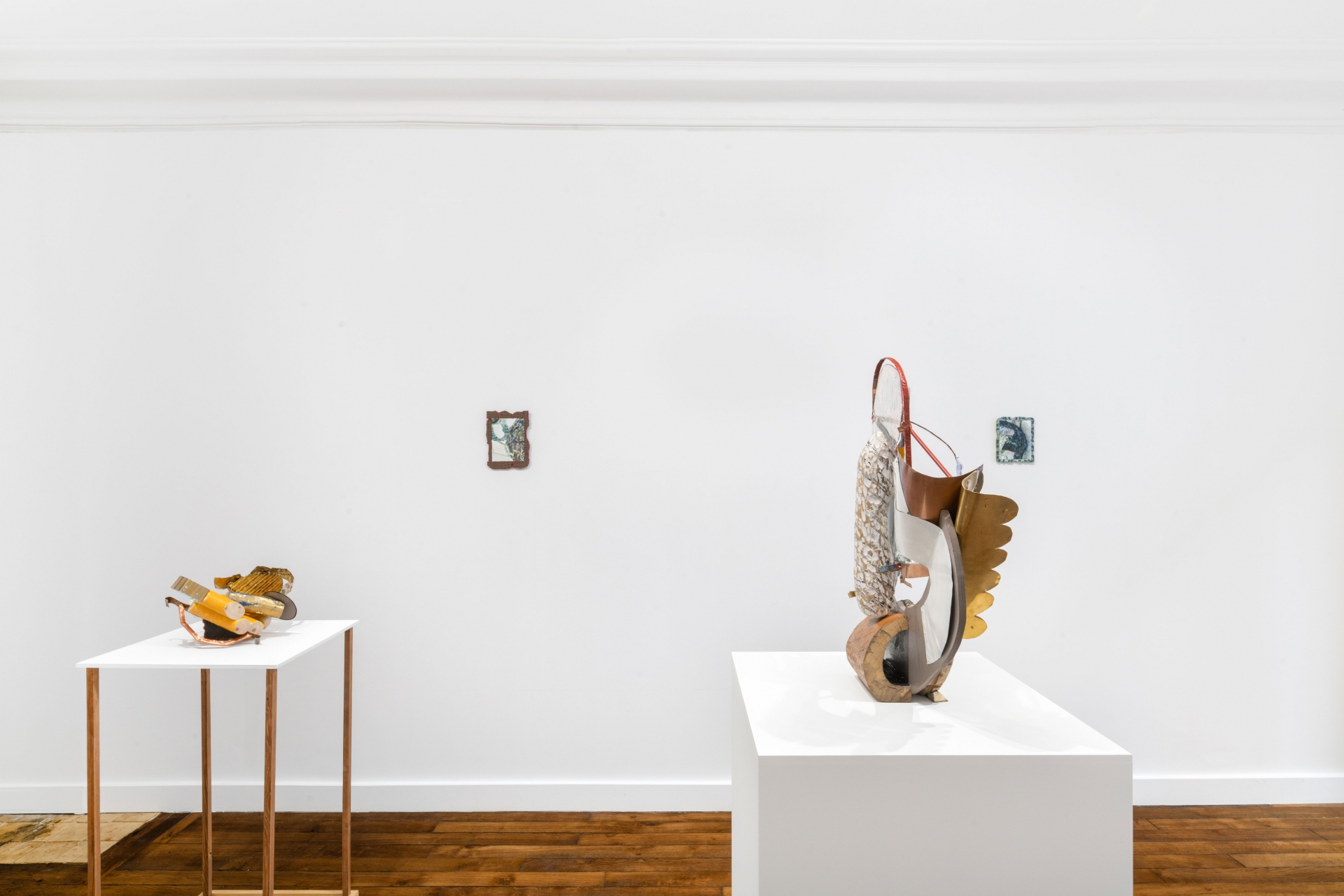

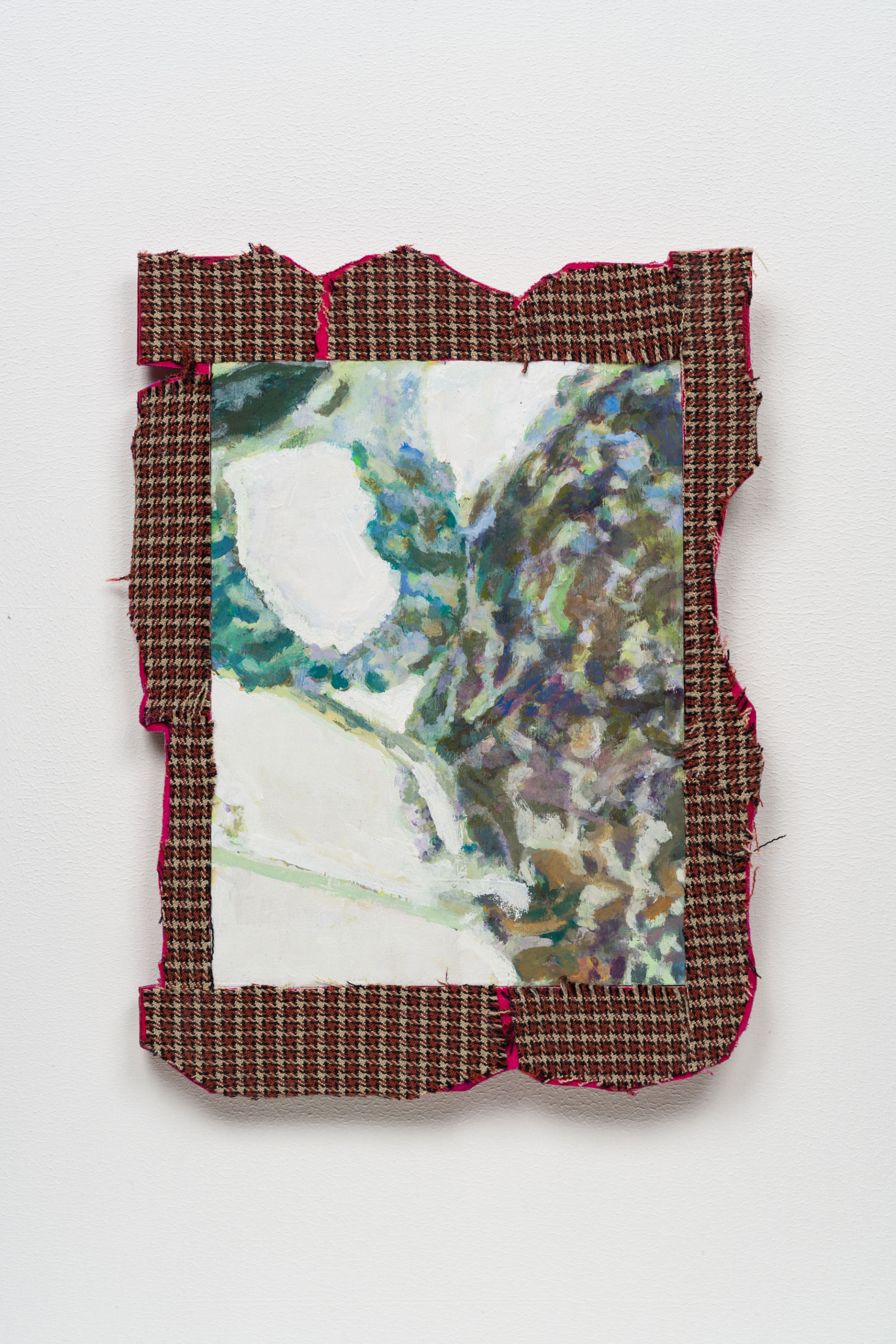
untitled 2, 2023
wood, acrylics and cloth, 21.5 × 17 cm
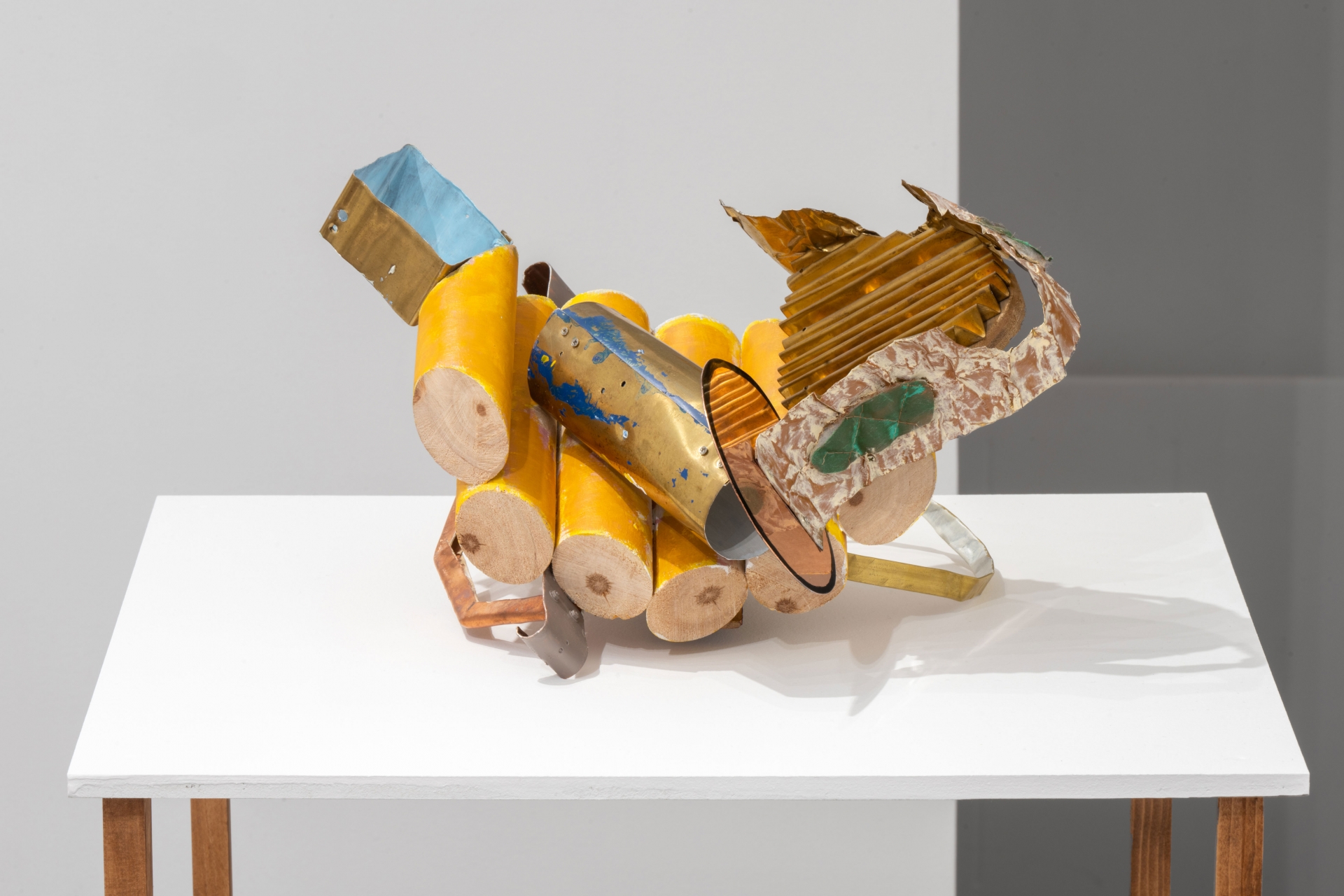
buttai 94, 2023
wood, copper plate, brass, cloth, acrylics, paint and permanent marker, 20 × 37 × 31 cm

buttai 94, 2023
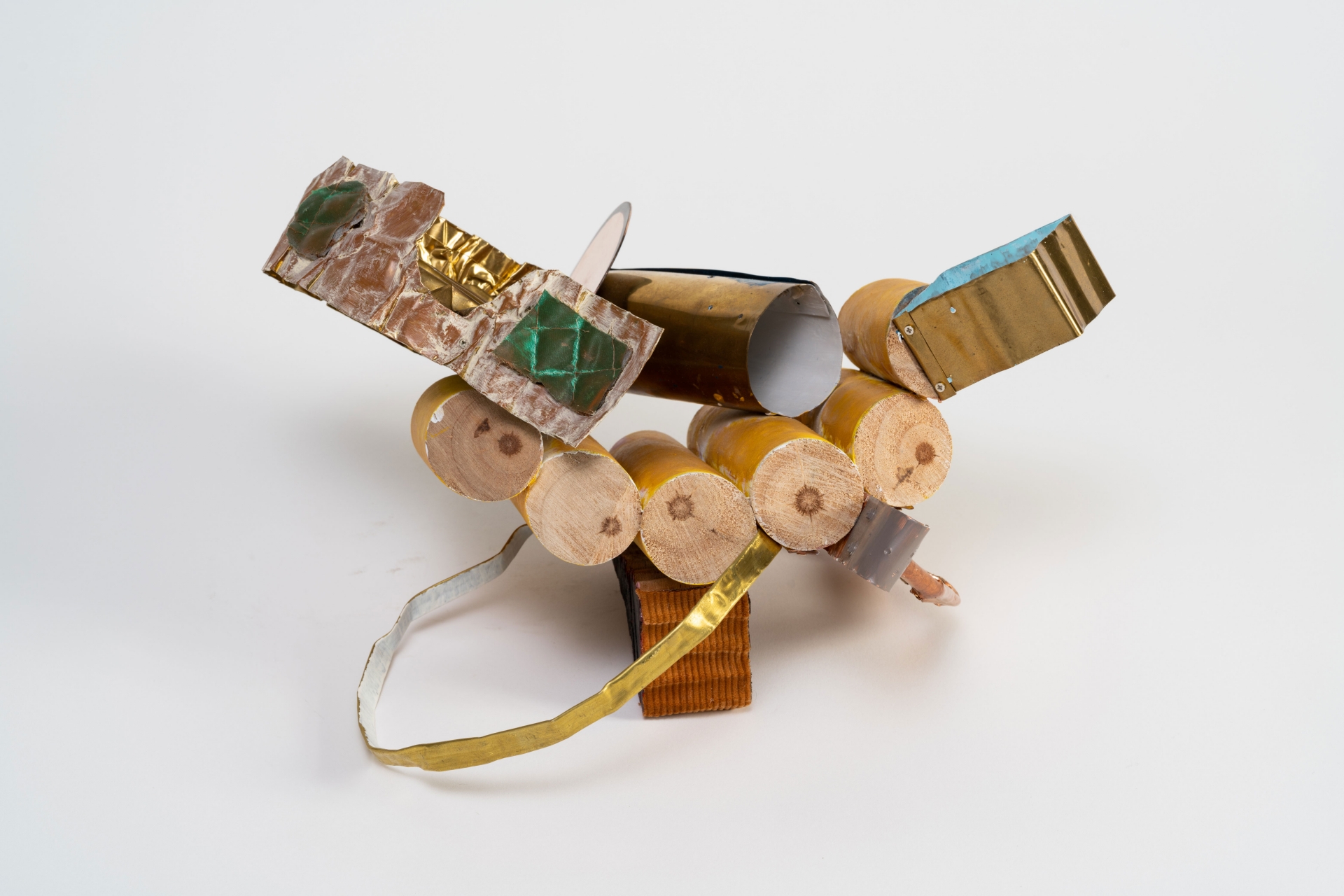
buttai 94, 2023
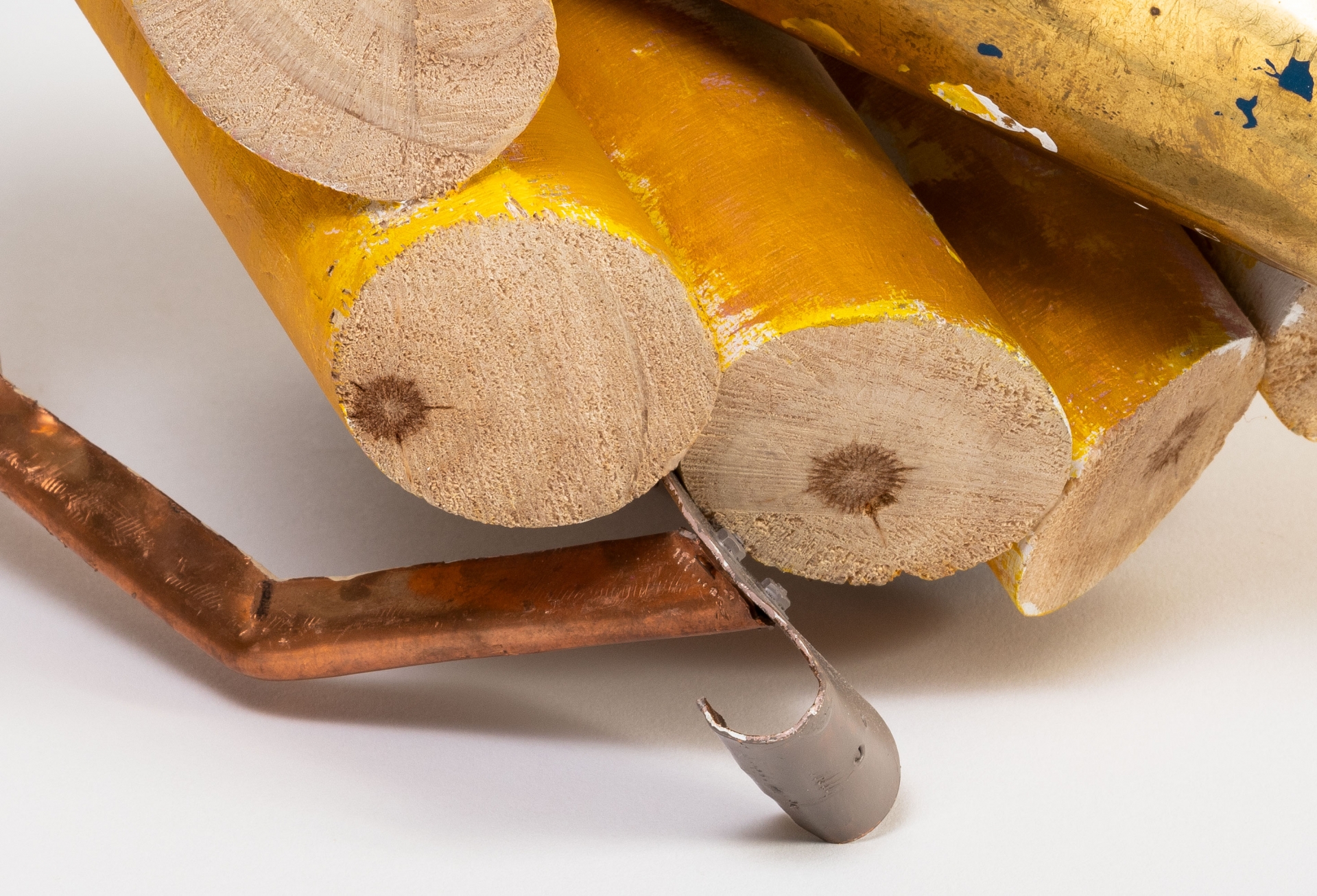
buttai 94, 2023, detail
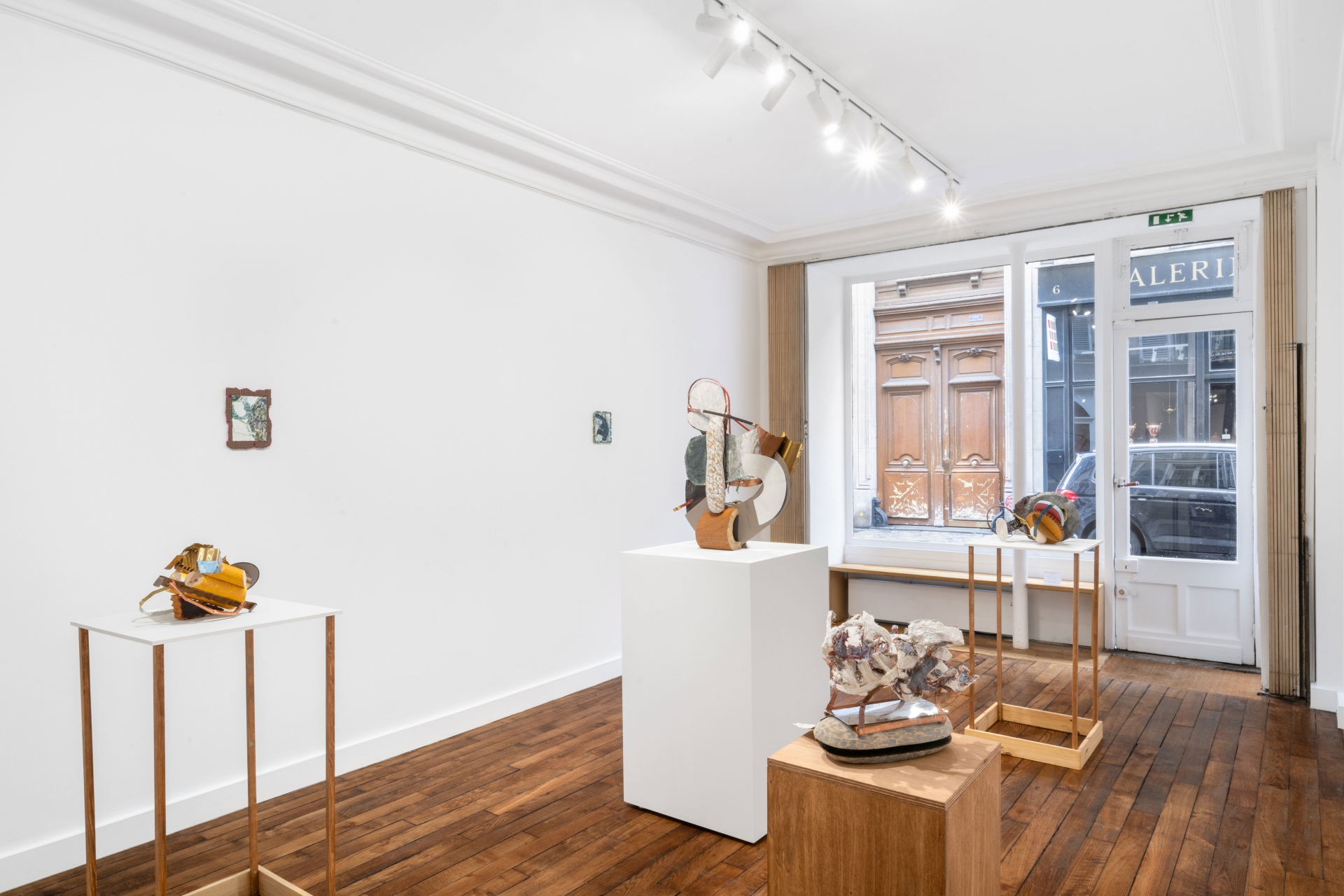
Exhibition views — Photo: Martin Argyroglo
PARIS — Cascades
9 rue des Cascades
75 020 Paris – France
from Tue. to Fri.: 10 a.m. to 6 p.m.
Sat.: 11 a.m. to 7 p.m.
and by appointment
PARIS — Beaune
5 & 7 rue de Beaune
75 007 Paris – France
from Tue. to Fri.: 10 a.m. to 6 p.m.
Sat.: 11 a.m. to 7 p.m.
and by appointment
Contact
PARIS — CASCADES: +33 (0)9 54 57 31 26
PARIS — BEAUNE: +33 (0)9 62 64 38 84
info@galeriecrevecoeur.com